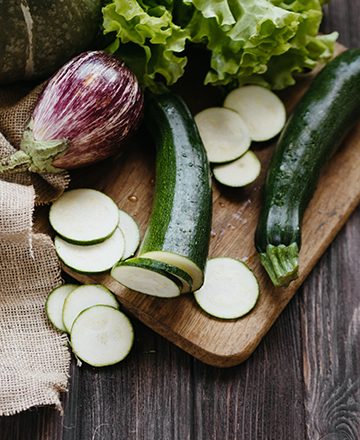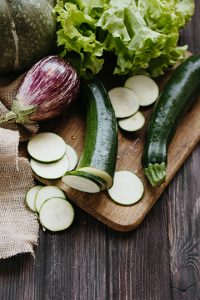Keep An Eye On Portion Size
 If you read the labels, double check portion size. You might be surprised at what you find. For instance, if you’ve lived on Ramen noodles in college or weekends, you’ll be surprised to find that half a brick of noodles is one portion. If you’re like most people, you probably thought the entire package was one portion. Portion size can make the difference in weight loss or nutritional intake, but it can be hard to do. There are some simple ways to help you identify one portion.
If you read the labels, double check portion size. You might be surprised at what you find. For instance, if you’ve lived on Ramen noodles in college or weekends, you’ll be surprised to find that half a brick of noodles is one portion. If you’re like most people, you probably thought the entire package was one portion. Portion size can make the difference in weight loss or nutritional intake, but it can be hard to do. There are some simple ways to help you identify one portion.
Use your hand as a portion monitor.
The size of your hand is proportional to the size of your body frame. A petite five-foot, 100-pound woman will have a smaller hand than a burly six-foot 200-pound man, so it automatically is personalized. While a level handful is one single serving of nuts, a heaping handful is about one serving of dry pasta. A two finger scoop is approximately two tablespoons or just the right amount for one serving of peanut butter and a one finger scoop perfect for butter. The palm of your hand can be used for the serving size for meat.
Why is it important to know portion size?
Everyone has his or her own personal downfalls. Maybe you’re a plate cleaner or even worse, the garbage disposal to finish the food leftover. Most people, however, find that portion control is one of the reasons they fail to lose weight. Having a few chips isn’t a problem, having more than a single portion at one sitting is. Did you know that just 15 chips is one serving and has a whopping 160 calories. You can see how not knowing can increase your caloric intake. Getting proper nutrition is also important and too small of portions of healthy foods is also a problem.
The size of your plate makes a difference.
If you use a smaller plate, it makes the right portion look huge. A larger plate will make it look like you aren’t getting much. Another place to be aware of portion size is when eating in restaurants. While fancier restaurants have smaller portions, mom-and-pop and restaurant chains often offer larger amounts than the serving portion. It can be multiple times the actual serving size. Super-sizing everything has also taken its toll on Americans and flies in the face of portion control.
- Use your fist to indicate how much starchy food to eat. Food like squash, potatoes, corn and peas are easy to measure. For women, one fist is one portion and for men use two fists.
- If you’re eating in a restaurant, ask if you can order off the children’s menu or if they have a smaller size. Some people order the regular size, share a meal or ask for a go box and pack half their meal immediately when they get it.
- Watching portion control isn’t enough, you have to be aware of all the add-ons, like sauces and toppings. Not only do all the extras add weight, it’s almost impossible to judge the portions used.
- Portion control works both ways. It ensures you don’t overeat, but also get adequate nutrition. Pay special attention to getting the portion of vegetables you need. Half your plate should be vegetables with ¼ protein and ¼ starches.
For more information, contact us today at LIV Fitness



 There’s lot of discussion of which foods are healthy and which should be avoided, which is good as long as you aren’t using broad categories like macronutrients. Macronutrients include fats, proteins and carbohydrates. Too often people vilify an entire group of macronutrients, like fat. The truth is, you need all the macronutrients to be healthy. While most fat is important, one group, trans fat can cause health issues, but there are some healthy trans fats, too. It’s the man made trans fat that’s bad, not the naturally occurring type found in meat and dairy.
There’s lot of discussion of which foods are healthy and which should be avoided, which is good as long as you aren’t using broad categories like macronutrients. Macronutrients include fats, proteins and carbohydrates. Too often people vilify an entire group of macronutrients, like fat. The truth is, you need all the macronutrients to be healthy. While most fat is important, one group, trans fat can cause health issues, but there are some healthy trans fats, too. It’s the man made trans fat that’s bad, not the naturally occurring type found in meat and dairy.
 You’ll get a personalized program at LIV Fitness in Dublin, CA. That means whether you need a push or should slow it down to a pace that’s less aggressive, all depends on you and your needs. Not everyone should have a program that pampers them or one that pushes your body to its maximum. How much is too much and how easy is pampering? You do have to work hard, but if you’re completely out of shape, that can be what others might consider pacing it.
You’ll get a personalized program at LIV Fitness in Dublin, CA. That means whether you need a push or should slow it down to a pace that’s less aggressive, all depends on you and your needs. Not everyone should have a program that pampers them or one that pushes your body to its maximum. How much is too much and how easy is pampering? You do have to work hard, but if you’re completely out of shape, that can be what others might consider pacing it.
 You may have heard about sugar alcohols for sweetening and ignored them, if you didn’t want sugar or alcohol in your diet. The name can trick you. Sugar alcohols are a carbohydrate with a chemical structure that’s very similar to both alcohol and sugar, but it’s neither. They aren’t alcohol in the traditional sense and don’t have the ability to make you drunk. They act like sugar in your mouth and stimulate the taste buds the way sugar does, but don’t contain the calories.
You may have heard about sugar alcohols for sweetening and ignored them, if you didn’t want sugar or alcohol in your diet. The name can trick you. Sugar alcohols are a carbohydrate with a chemical structure that’s very similar to both alcohol and sugar, but it’s neither. They aren’t alcohol in the traditional sense and don’t have the ability to make you drunk. They act like sugar in your mouth and stimulate the taste buds the way sugar does, but don’t contain the calories.
 This is the perfect time of year for clean eating. It’s summer and many fresh fruits and vegetables are inexpensive. It’s one of the best times to start clean eating, but what is it? Eating clean means choosing foods that aren’t highly processed, choosing fresh, frozen or canned foods with no additives. It’s eating green, which means eating foods that are fresh and colorful, not just green. Clean eating also includes eating lean meat that’s cooked in a healthy way.
This is the perfect time of year for clean eating. It’s summer and many fresh fruits and vegetables are inexpensive. It’s one of the best times to start clean eating, but what is it? Eating clean means choosing foods that aren’t highly processed, choosing fresh, frozen or canned foods with no additives. It’s eating green, which means eating foods that are fresh and colorful, not just green. Clean eating also includes eating lean meat that’s cooked in a healthy way.
 Getting healthy involves more than just working out. It means you have to eat healthy. That includes not only the food you eat, but also what you drink. We can help you in both areas at Liv Fitness in Dublin, CA. Clients often ask whether they have to give up all alcohol and just how bad it is for you. The truth is, some types of alcoholic drinks are actually good for you. It depends on how often you drink and how much. Alcohol is high in calories and drinking too much can sabotage your diet, plus damage your liver and cause other negative health issues. What about moderate drinking, one drink a day? Does it matter what type of alcohol you consume?
Getting healthy involves more than just working out. It means you have to eat healthy. That includes not only the food you eat, but also what you drink. We can help you in both areas at Liv Fitness in Dublin, CA. Clients often ask whether they have to give up all alcohol and just how bad it is for you. The truth is, some types of alcoholic drinks are actually good for you. It depends on how often you drink and how much. Alcohol is high in calories and drinking too much can sabotage your diet, plus damage your liver and cause other negative health issues. What about moderate drinking, one drink a day? Does it matter what type of alcohol you consume?
 If you read the words, “healthy thoughts” and immediately thought of Stuart Smalley’s Daily Affirmations on Saturday Night Live. “I’m good enough. I’m smart enough and doggone, people like me.” I’m glad to say, it’s not that. Sometimes, bad things happen and it’s normal to get upset. However, being upset for years or not looking at the whole picture is a different matter. There are so many lessons to learn when you look at everything, the good, the bad and the neutral. It’s balancing out the negatives with the positives.
If you read the words, “healthy thoughts” and immediately thought of Stuart Smalley’s Daily Affirmations on Saturday Night Live. “I’m good enough. I’m smart enough and doggone, people like me.” I’m glad to say, it’s not that. Sometimes, bad things happen and it’s normal to get upset. However, being upset for years or not looking at the whole picture is a different matter. There are so many lessons to learn when you look at everything, the good, the bad and the neutral. It’s balancing out the negatives with the positives.
 At LIV Fitness in Dublin, CA, we provide personalized diets, but one thing they all have in common is that they contain three macronutrients, fat, protein and carbohydrates. Each diet is personalized, so the types of foods in these groups and balance of nutrients vary. Extra virgin olive oil is one of the healthiest fat, but are there ones that are equally healthy or even healthier? That’s particularly important for anyone that can’t consume olive oil or simply don’t like it.
At LIV Fitness in Dublin, CA, we provide personalized diets, but one thing they all have in common is that they contain three macronutrients, fat, protein and carbohydrates. Each diet is personalized, so the types of foods in these groups and balance of nutrients vary. Extra virgin olive oil is one of the healthiest fat, but are there ones that are equally healthy or even healthier? That’s particularly important for anyone that can’t consume olive oil or simply don’t like it.
 Drinking plenty of good ole’ H2O is important for your body and your overall health. They body is composed of approximately 60% water, which varies with each person. Water plays a huge role in your body’s health. It can help lower blood pressure and improve cholesterol levels. Your skin will look better if you have adequate water. If you’re feeling tired, try a glass of water, rather than opting for coffee, which can contribute to dehydration. Drinking water can help slow aging, improve your eye health, improve cognitive functioning and help you lose weight, especially water weight.
Drinking plenty of good ole’ H2O is important for your body and your overall health. They body is composed of approximately 60% water, which varies with each person. Water plays a huge role in your body’s health. It can help lower blood pressure and improve cholesterol levels. Your skin will look better if you have adequate water. If you’re feeling tired, try a glass of water, rather than opting for coffee, which can contribute to dehydration. Drinking water can help slow aging, improve your eye health, improve cognitive functioning and help you lose weight, especially water weight.
 What are pre-workouts and are the worth the extra cost? That’s a question that many clients at Liv Fitness in Dublin, CA, have asked and the answer is simple. Preworkouts are commercially produced products that make getting the extra calories and energies you need more convenient. They’re a combination of protein and carbs to be consumed before working out that provide both the energy for your muscle tissue and a feeling of fullness so you don’t feel ravenous later.
What are pre-workouts and are the worth the extra cost? That’s a question that many clients at Liv Fitness in Dublin, CA, have asked and the answer is simple. Preworkouts are commercially produced products that make getting the extra calories and energies you need more convenient. They’re a combination of protein and carbs to be consumed before working out that provide both the energy for your muscle tissue and a feeling of fullness so you don’t feel ravenous later.